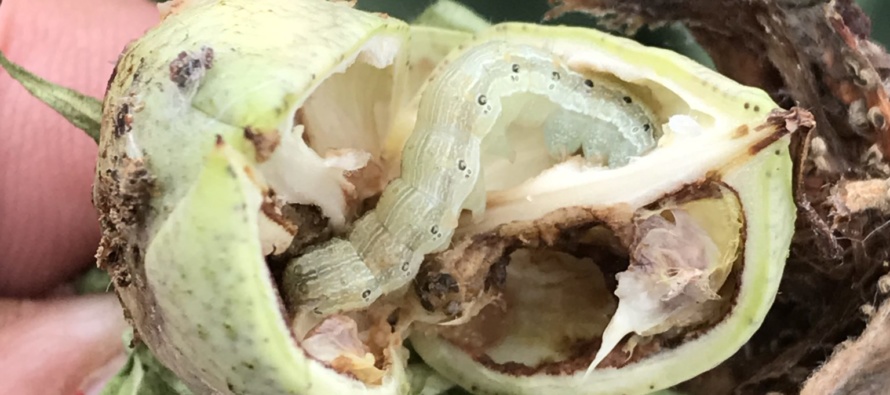Bollworm Update in Cotton and Soybean

Related Articles
- 2010 Soybean And Corn Variety Trial Data 3
- Fertilizing Cotton with Poultry Litter 5
- Mississippi Cotton Insect Situation of 2010: A Look Back 3
Latest Tweets
Bollworms have certainly been the hot topic in cotton and later planted soybeans this year. This flight started in some areas the week of July 4th and peaked in the Southern Delta around July 10-15. Since that time it has tapered off some but many are reporting new egg lays. Also, now we are getting more reports out of the North Delta and Hill Region of the state. Many of the problems that have been associated with this flight in cotton revolve around worms going through the Bt technologies and less than expected control with the insecticides we are using to control them. Many are reporting disappointing results from Prevathon and Besiege and are questioning efficacy of these products. It is our current belief that with cotton bollworm, we not seeing resistance, rather just experiencing difficulty getting materials down in the canopy to the worms that are already in protected places. Many of the older consultants will tell you that this has been a problem forever in cotton. We are just not use to seeing this many worms in cotton in a number of years. Also, we are using these same products on this same cohort of worms in soybeans (Prevathon, Besiege, and Intrepid Edge) and getting fantastic control with all of them. This points to a coverage issue in cotton. Although, we have had very inconsistent results and no longer recommend pyrethroids alone and or mixed with acephate to control bollworms in cotton, we do know that we have had very good luck at taking out the moths with this combination but not the larvae, However we are getting several reports that following a diamide application ~7 days with a high rate of pyrethroid plus at least 3/4 lb. acephate has provided some additional control, but I would not start with this.
Going forward as blooms move up to the top 30-50% of the plant, coverage on blooms may increase resulting in better control. If using an airplane we would suggest using at least 5 GPA, with ground rigs 10 GPA and flat fans or hollow cone tips at high PSI (not the big droplet Dicamba tips!). Anything you can do to help get the material down in the canopy will help.
Finally, when you hear about the these things it is important to remember that this may not be the case for every field and every part of the state. We have had quite a few calls stating they are hearing a lot about this bollworm flight but not finding them or not finding them in every field. This may very well be the case. It is important to make your determinations based on at least weekly scouting of fields.




Let me tell You a sad story ! There are no comments yet, but You can be first one to comment this article.
Write a comment